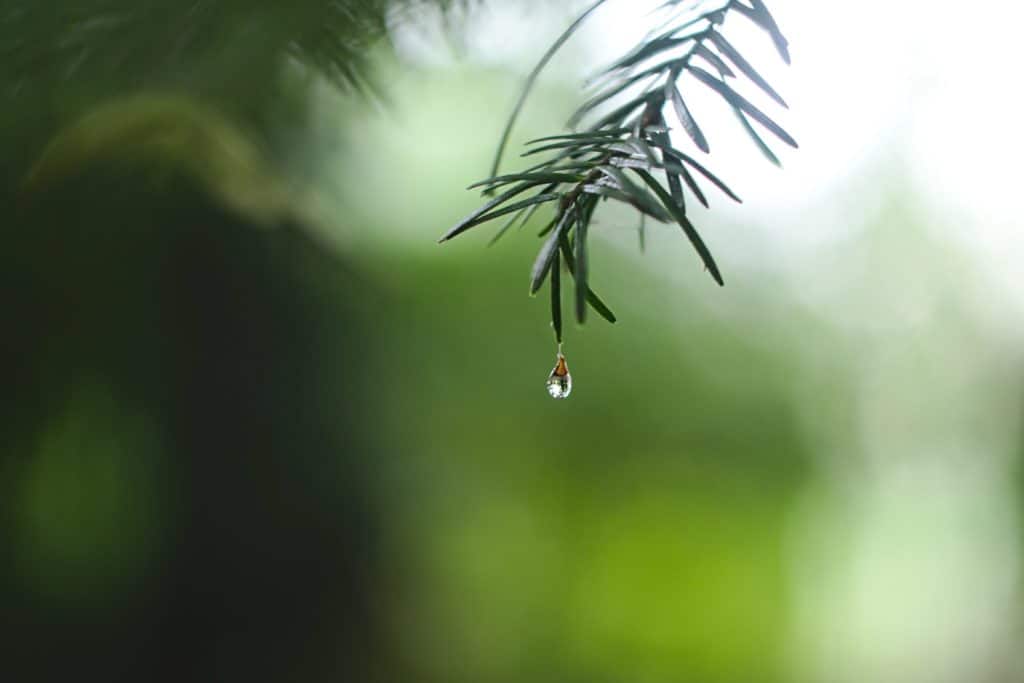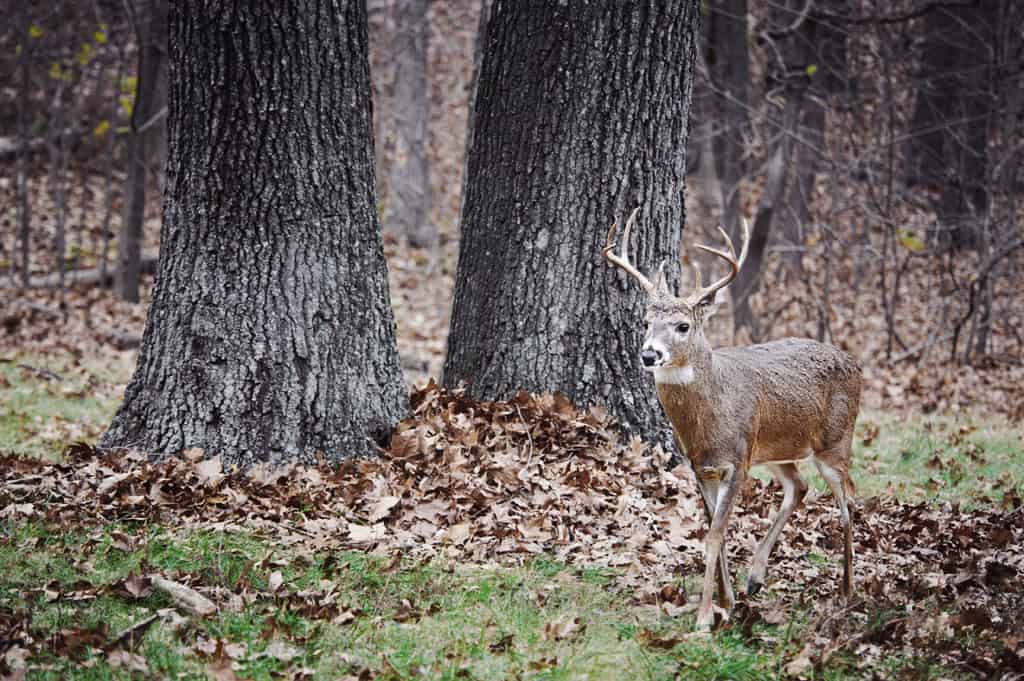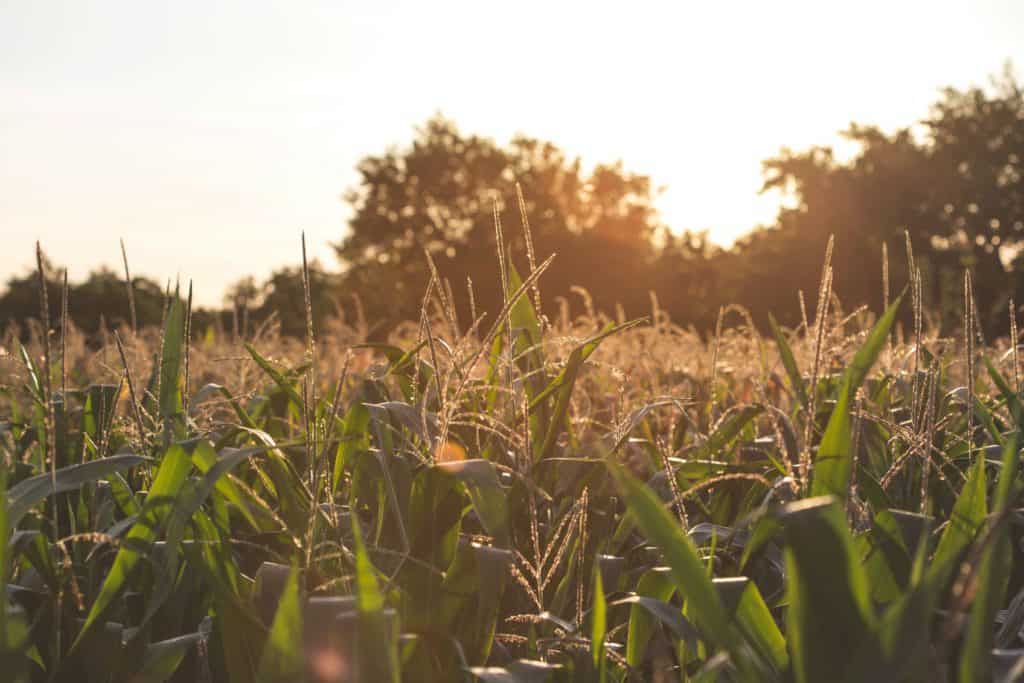Every hunter loves to get out in the woods and hunt until they see rain in the forecast. One moment the hunting is great and then next you see a bad forecast for the next few days and the rest of the hunting trip feels like a bust.
Usually, these hunters have concerns about their gear getting wet or getting wet themselves. We know that rain sometimes deters hunters, but how does it affect deer and how they move?
It is surprising to me just how many hunters will skip out on a hunt just because of a little rain, but if you stick in there you can reap the benefits. Plus one bad or wet day in the stand is better than ten good days in the office.
Is It Good to Hunt After a Rain?

Shortly after a rain can be one of the best times to be in the woods. Everything starts to move again and because of the rain, their senses can be a little bit impaired.
Deer can not hear as well and their sense of smell is challenged by the humid air and challenging winds that come along with rain.
A deer’s sense of smell is its number one defense. When the rain comes through and washes away all the surrounding scent it can make it harder for them to smell in general. They will likely stay put until it lightens up and then will get up to feed and respread scent.
Plus, it is likely still wet in the woods after heavy rain due to the rain left on tree leaves falling to the ground. We can use this to our advantage because we also know that rain can dampen noises and hinder the ability to hear not only for ourselves but for the deer.
This is great for you if you are walking the morning after it has rained all night. This can make it easier to get into your hunting spot. The leaves are not as crunchy, and you can slip in undetected.
Unfortunately, so can the deer. Whitetail are already super quiet traveling through the woods. On a rainy day, you really need to be scanning the surrounding woods and paying attention or else they will slip by undetected.
Is It Better to Hunt Before or After a Rain?
While you have the weather channel, whitetail do not. Although they still know when the rain is coming hours or days before it actually does get there.
During a heavy downpour, deer are going to hunker down in their safest bedding area and chew their cud. So they better get out and feed before the rain gets there.
If you know that a big storm is coming it might be a good idea to hunt around food sources the day before it shows up. Impending weather can increase deer activity.
Although, you can still find success hunting around scrape lines and rub lines during the rut. Bucks are eager to spread their scent around when they know they will not be able to for 8-12 hours due to incoming weather.
After the rain comes, deer are going to be hungry. They are likely going to be moving to their favorite food sources shortly after the rain stops.
During the rut, whitetail bucks are also known to get back to their scrape lines right after a rain so they can spread their scent back around. It is a little easier to tell when the rain will stop or let up than it is to tell when it will start, so your best bet is to hunt after the rain.
Deer move a little more after the rain than before simply because of their empty bellies.
Whitetail Movement After a Rain

“Whitetail Buck” (CC BY-SA 2.0) by scottspaeth
Deer movement definitely changes after the dreaded rain stops. Especially, if it has been raining for an extended period of time like a few days.
We know that after a rain, most mature bucks will go back to their scrapes and check them and rework them. They can rework their entire scrape line in less than an hour. We can take advantage of this and make sure we are out in the rain just before it quits.
I suggest getting out into a stand overlooking a scrape line a few hours before the rain stops. When your buck comes patrolling through to his scrapes, you are there waiting on him and not just now walking in and spooking him.
If the rain has fallen for a long time, either all night long or for most of the day, more than likely the bucks have bedded down from the time the rain started.
If they’ve gone 8-12 hours without feeding, as soon as the rain stops, they will get after it. Even if you hunt before or after the rut, setting up your tree stand near a food source before the rain stops may help you harvest a buck.
Every property is different though. You have to know what deer do under bad weather conditions, and you must also understand what other hunters in the area you hunt do.
With a little bit of preseason scouting, you can know exactly how the rain affects your deer. With a little socializing, you can tell which hunters are going to stay inside during the rain as well.
How to Hunt Whitetail After a Rain
There are plenty of strategies for deer hunting in general, but after a rain, there are a few strategies you should specifically utilize. Generally, you will want to hunt around areas of necessity, places like food sources and water, or maybe social areas like scrapes.
Where to hunt is only part of the equation though. You also need to think about how you are going to hunt and what you are going to do after the shot.
Where to Hunt

When a whitetail gets up from hours of laying in their beds, just like you, they are going to be hungry. They will start moving to their favorite food sources as soon as the opportunity presents itself. On the way, most bucks will have scrape and rub lines.
They are going to stop and work these lines on their way to feed. Especially during the rut. Their main goal at that time is to make sure everyone knows they are there.
If it rains when the rut is in full swing, these scrape and rub lines are going to be the first priority for bucks.
This means you should definitely be taking advantage of these opportunities and hunting those scrape or rub lines that lead out to food sources. The perfect place to put a stand would be within the range of a scrape or rub line and a food source.
Staying Dry

Most of the movement is going to happen when the rain lets up, not necessarily when it stops. So if you are getting in the woods a few hours before it lets up, you are definitely going to get a little wet.
You need to make sure that you are waterproof. Coming equipped with a nice base layer will keep you warm. Adding a few warm shirts and a waterproof jacket will keep you warm and dry as well. Layering is key!
The same goes for the bottom half. Make sure you have an insulating layer and some warm and waterproof pants.
There is nothing worse than getting in the stand with cold or wet feet. Make sure your hunting boots are waterproof or that you have a waterproof spray for them to use a treatment.
Wearing wool socks instead of cotton will also help tremendously. Wool drys out much faster and keeps you warmer than cotton or other popular cheap materials.
Another option you may not have thought of is hunting in a box blind or popup blind on rainy days. These guys will help keep you dry and offer much better protection than standard rain gear. Then you only need to wear your waterproof layers on the trip in and can shed them when you get to your hunting spot.
Although, if you are bow hunting you need to make sure your blind is big enough for you to stand up in and shoot through.
Tracking in/after a rain

Tracking is probably one of the biggest reasons a lot of hunters will not hunt in or after heavy rain. As a hunter, one of the best things we have for tracking is a blood trail.
If you do not place a good shot, the rain or droplets from the trees could wash away your blood trail, and then what are you going to do?
Well, deer leave more signs than just blood through the woods when they are hit but they can be harder to see if you don’t know what you’re looking for.
Things like kicked up leaves and small broken tree limbs, mixed with the natural terrain, should point you in the right direction.
That is why I suggest if you are hunting in the rain or after the rain, you need to set up with the intention of shooting deer at close range. 20-25 yards should be your max range with a bow.
This way you have a better chance of putting a good shot on them. Of course, this depends on what you are hunting with. If you are hunting with a rifle, you will have much better range.
After the shot, do not be so worried about the blood trail that you do not give the deer time to die. Always allow around thirty minutes for deer to die no matter how perfect your shot is.
Not only is this for your safety, but it also keeps you from jumping that wounded deer and making him run even further with little to no blood trail.
If you jump him before he is dead in these conditions, your chances of a successful retrieval are decreased.
If you feel like you did not put the best shot on your deer, then do not be afraid to pull out and give him a few hours or the night to die, depending on the time of day you shot him.
Conclusion
To wrap it all up, hunting right after a rain can be the perfect time to go after bucks that normally do not travel much during the day.
As long as you understand how deer move on your preferred property, you can pattern their post-rain movements and know exactly which food sources and scrape lines they are going to be at.
As long as you can keep yourself and your gear dry, you should be fine. As long as you remember to place your stand or dry box blind in a spot that will allow you to make a clean shot.


